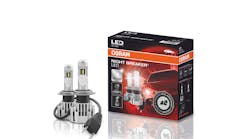Telectra has also won the innovation prize at the Oxfordshire Business Awards 2005 with its Bead*light Technologies diffusion system.
Ice*lighting is a direct-view lighting fixture which is now at the forefront of the convergence of lighting and video, with the ability to provide wide-area video effects across split batten arrays without the use of a media server.
“The real point about product development is that technology innovation must exceed customer needs and expectations,” said Alan Oliver, Telectra’s sales and marketing director. "In the world of entertainment, lighting and display effects need to be provided that are new and pleasing to the eye."
“The ABTT Award is a tribute to the time and resources invested by Telectra’s team over the last two years and we thank those lighting professionals who have assisted us in providing feedback to create a truly new type of effect for TV, stage and events.”
Bead*light Technologies
Telectra, based in Witney, UK, has developed a way of diffusing the directional light created by LEDs with much less attenuation than other solutions. Although RGB LED lighting is excellent in projecting and mixing colours, effective "direct view" (or "look at") LED solutions tend to suffer from one of two problems; one is that the light output is so powerful that viewing is at best uncomfortable or at worst potentially hazardous, the second is that the filtering mechanism to create a diffuse light source is often so poor that the vibrancy of the light is completely lost and images lack definition.
One of the first applications was in passenger aircraft, where certain airlines (notably Virgin Atlantic and KLM) identified LEDs as potential light sources for reading lights. However, the airlines were concerned about the discomfort and potential hazard to passenger eyesight of LED lighting. This resulted in the development of diffuse light sources using Telectra's Bead*light Technologies.
Each ice*lighting batten consists of 8 adjoining hexagons with a total length of 111 cm, and width of 16 cm. The battens contain a total of 1152 LEDs with equal numbers of red, green and blue emitters. The lens system contains over 300,000 microlenses. Power consumption is 25 W in standby mode and 165 W at full intensity.
Light and video
Although initially conceived as a direct-view lighting fixture, the ice*lighting batten is now also able to display video effects directly from a DMX desk or controller, without the need for a media server. The effects can be displayed across battens which are connected to form a screen or separated in any combination required.
Telectra's approach to controlling the LEDs is to place primary control within the batten. Because each batten has considerable on-board processing power, the entire batten and its 1152 emitters is driven by only 8 channels of DMX. "Some may consider the ice*lighting batten to be a computer with a specialized LED screen," says Oliver.







